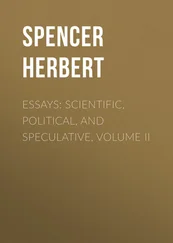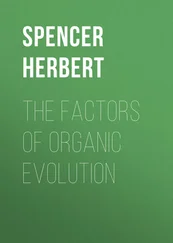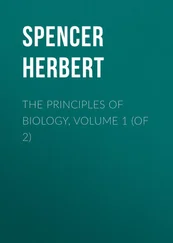Simultaneously there has been going on a second differentiation of a more familiar kind; that, namely, by which the mass of the community has been segregated into distinct classes and orders of workers. While the governing part has undergone the complex development above detailed, the governed part has undergone an equally complex development, which has resulted in that minute division of labour characterizing advanced nations. It is needless to trace out this progress from its first stages, up through the caste-divisions of the East and the incorporated guilds of Europe, to the elaborate producing and distributing organization existing among ourselves. It has been an evolution which, beginning with a tribe whose members severally perform the same actions each for himself, ends with a civilized community whose members severally perform different actions for each other; and an evolution which has transformed the solitary producer of any one commodity into a combination of producers who, united under a master, take separate parts in the manufacture of such commodity. But there are yet other and higher phases of this advance from the homogeneous to the heterogeneous in the industrial organization of society. Long after considerable progress has been made in the division of labour among different classes of workers, there is still little or no division of labour among the widely separated parts of the community: the nation continues comparatively homogeneous in the respect that in each district the same occupations are pursued. But when roads and other means of transit become numerous and good, the different districts begin to assume different functions, and to become mutually dependent. The calico manufacture locates itself in this county, the woollen-cloth manufacture in that; silks are produced here, lace there; stockings in one place, shoes in another; pottery, hardware, cutlery, come to have their special towns; and ultimately every locality becomes more or less distinguished from the rest by the leading occupation carried on in it. This subdivision of functions shows itself not only among the different parts of the same nation, but among different nations. That exchange of commodities which free-trade is increasing so largely, will ultimately have the effect of specializing, in a greater or less degree, the industry of each people. So that, beginning with a barbarous tribe, almost if not quite homogeneous in the functions of its members, the progress has been, and still is, towards an economic aggregation of the whole human race; growing ever more heterogeneous in respect of the separate functions assumed by separate nations, the separate functions assumed by the local sections of each nation, the separate functions assumed by the many kinds of makers and traders in each town, and the separate functions assumed by the workers united in producing each commodity.
The law thus clearly exemplified in the evolution of the social organism, is exemplified with equal clearness in the evolution of all products of human thought and action; whether concrete or abstract, real or ideal. Let us take Language as our first illustration.
The lowest form of language is the exclamation, by which an entire idea is vaguely conveyed through a single sound, as among the lower animals. That human language ever consisted solely of exclamations, and so was strictly homogeneous in respect of its parts of speech, we have no evidence. But that language can be traced down to a form in which nouns and verbs are its only elements, is an established fact. In the gradual multiplication of parts of speech out of these primary ones—in the differentiation of verbs into active and passive, of nouns into abstract and concrete—in the rise of distinctions of mood, tense, person, of number and case—in the formation of auxiliary verbs, of adjectives, adverbs, pronouns, prepositions, articles—in the divergence of those orders, genera, species, and varieties of parts of speech by which civilized races express minute modifications of meaning—we see a change from the homogeneous to the heterogeneous. Another aspect under which we may trace the development of language is the divergence of words having common origins. Philology early disclosed the truth that in all languages words may be grouped into families, the members of each of which are allied by their derivation. Names springing from a primitive root, themselves become the parents of other names still further modified. And by the aid of those systematic modes which presently arise, of making derivatives and forming compound terms, there is finally developed a tribe of words so heterogeneous in sound and meaning, that to the uninitiated it seems incredible they should be nearly related. Meanwhile from other roots there are being evolved other such tribes, until there results a language of some sixty thousand or more unlike words, signifying as many unlike objects, qualities, acts. Yet another way in which language in general advances from the homogeneous to the heterogeneous, is in the multiplication of languages. Whether all languages have grown from one stock, or whether, as some philologists think, they have grown from two or more stocks, it is clear that since large groups of languages, as the Indo-European, are of one parentage, they have become distinct through a process of continuous divergence. The same diffusion over the Earth's surface which has led to differentiations of race, has simultaneously led to differentiations of speech: a truth which we see further illustrated in each nation by the distinct dialects found in separate districts. Thus the progress of Language conforms to the general law, alike in the evolution of languages, in the evolution of families of words, and in the evolution of parts of speech.
On passing from spoken to written language, we come upon several classes of facts, having similar implications. Written language is connate with Painting and Sculpture; and at first all three are appendages of Architecture, and have a direct connection with the primary form of all Government—the theocratic. Merely noting by the way the fact that sundry wild races, as for example the Australians and the tribes of South Africa, are given to depicting personages and events upon the walls of caves, which are probably regarded as sacred places, let us pass to the case of the Egyptians. Among them, as also among the Assyrians, we find mural paintings used to decorate the temple of the god and the palace of the king (which were, indeed, originally identical); and as such they were governmental appliances in the same sense as state-pageants and religious feasts were. They were governmental appliances in another way: representing as they did the worship of the god, the triumphs of the god-king, the submission of his subjects, and the punishment of the rebellious. Further, they were governmental, as being the products of an art reverenced by the people as a sacred mystery. From the habitual use of this pictorial representation there grew up the but-slightly-modified practice of picture-writing—a practice which was found still extant among North American peoples at the time they were discovered. By abbreviations analogous to those still going on in our own written language, the most frequently-recurring of these pictured figures were successively simplified; and ultimately there grew up a system of symbols, most of which had but distant resemblances to the things for which they stood. The inference that the hieroglyphics of the Egyptians were thus produced, is confirmed by the fact that the picture-writing of the Mexicans was found to have given birth to a like family of ideographic forms; and among them, as among the Egyptians, these had been partially differentiated into the kuriological or imitative, and the tropical or symbolic; which were, however, used together in the same record. In Egypt, written language underwent a further differentiation, whence resulted the hieratic and the epistolographic or enchorial ; both of which are derived from the original hieroglyphic. At the same time we find that for the expression of proper names, which could not be otherwise conveyed, signs having phonetic values were employed; and though it is alleged that the Egyptians never achieved complete alphabetic writing, yet it can scarcely be doubted that these phonetic symbols, occasionally used in aid of their ideographic ones, were the germs of an alphabetic system. Once having become separate from hieroglyphics, alphabetic writing itself underwent numerous differentiations—multiplied alphabets were produced; between most of which, however, more or less connection can still be traced. And in each civilized nation there has now grown up, for the representation of one set of sounds, several sets of written signs used for distinct purposes. Finally, from writing diverged printing; which, uniform in kind as it was at first, has since become multiform.
Читать дальше












